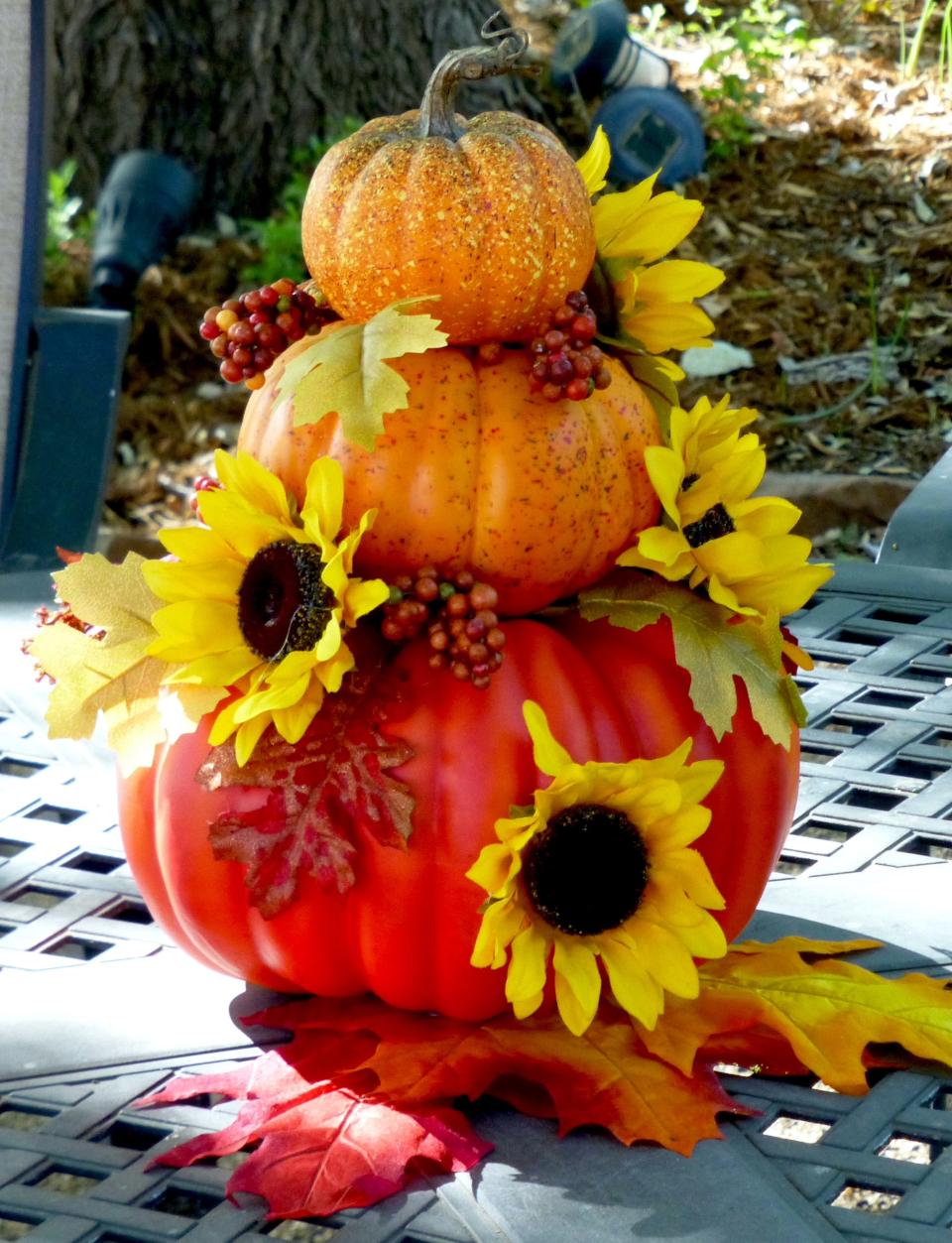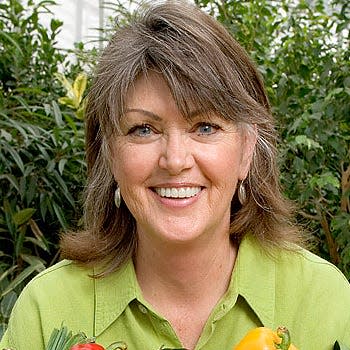Gardening for You: Pumpkin stacks for autumn décor
Call them stacks, topiaries, totems, towers, or other descriptive name. Regardless, piling pumpkins atop each other makes a great autumn decoration. The names used for autumn pumpkin décor suggests how the pumpkins are assembled. Collectively, we’ll just call them pumpkin art.

There is no "rule" for assembling pumpkins but all of them have a vertical element. Pumpkin art can use different shaped, sized, colored, and type of pumpkins. Any of these art forms can be made with pumpkins harvested from the garden, purchased from garden centers, or faux pumpkins purchased from hobby stores.
Stacked pumpkins.
Pumpkins to be stacked can be same sizes or graduated sizes, largest on the bottom to smaller ones on top.
Odd numbers give a balanced presentation.
Position largest pumpkins on the bottom.
For fresh pumpkins, cut stems of bottom and middle pumpkins flush with the shoulders. Leave stem on the topmost pumpkins. Do not pierce skin of fresh pumpkins.
To keep the stack from wobbling apply an adhesive like clear Gorilla Glue to affix the next highest pumpkin; secure by pushing gently into the skin. Continue this approach when adding the next higher pumpkin.
If using faux pumpkins insert heavy wires or dowels sharpened to a point. Depending upon the size of the pumpkin, one may be sufficient to secure the next pumpkin or several might be needed.
Faux pumpkins are secured with Gorilla Glue. Dowels keep the stack erect; the adhesive is needed to keep pumpkins tightly nestled to each other.
After the number of pumpkins have been assembled in the stack, it can be customized with fall colored leaves, seed heads, flower heads, or wreaths.
Pumpkin topiary. What sets a pumpkin topiary apart from a pumpkin stack is that the finished product is displayed in an urn or jardinière. Topiaries have a more elegant display than the stack that sits on the ground.
Select containers that coordinate with the pumpkins. Terra cotta pots complement more earthy types of topiaries. Burnished metals and glazed pots have a more refined look.
Select containers large enough to comfortably hold the largest bottom pumpkin.
Fill the container with gravel, rocks, sand, or potting media, something that adds sufficient weight to support the weight of the pumpkins while keeping it upright.

Pumpkin totems or towers. These are much the same as stacked pumpkins except taller. There are more pumpkins and they are usually smaller. Totems have inscriptions of animals or other beings that towers lack.
Stabilize with a metal rod that runs the length of the tower.
Anchor the rod to keep from toppling over.
Thread pumpkins onto the rod and secure following general guidelines for stacking pumpkins.
Ellen Peffley taught horticulture at the college level for 28 years, 25 of those at Texas Tech, during which time she developed two onion varieties. She is now the sole proprietor of From the Garden, a market garden farmette. You can email her at gardens@suddenlink.net
This article originally appeared on Lubbock Avalanche-Journal: Gardening for You: Pumpkin stacks for autumn décor

